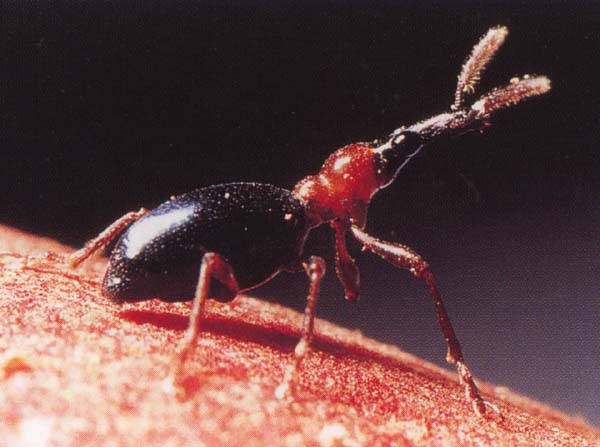|

Larvae
tunnelling in stem (N. Talekar).

Adult male sweetpotato weevil. |
Diagnostic
summary
-
larvae feed and tunnel into the stems and storage
roots.
-
adult weevils feed on the tender buds, leaves, stems
and storage roots.
-
damage is characterized by small feeding and
ovipositional punctures on the stem and storage root surface and larval
tunnels filled with frass on the tissues.
-
larval feeding causes thickening, drying and cracking of the stem.
|
Taxonomy
Economic
importance
Geographical
distribution
Damage
Morphology
Biology
and ecology
Detection
and inspection
Management
References
View full fact sheet
Other weevils |

